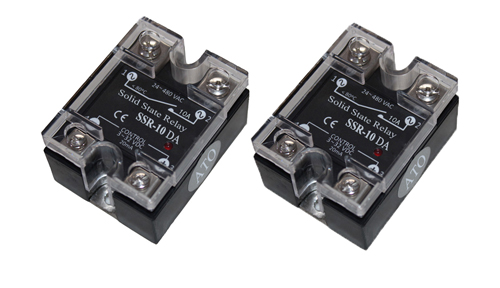How to Maintain a Solid State Relay?
Solid state relay, short for SSR, is a non-contact switch composed of microelectronic circuits, discrete electronic devices, and power electronic power devices. The isolation device is used to realize the isolation between the control terminal and the load terminal. The input end of the solid state relay uses a tiny control signal to directly drive a large current load. So, how to maintain a solid state relay?

- When selecting a solid state relay for a printed circuit board with a small current specification, since the lead terminals are made of high thermal conductivity materials, the welding should be carried out under the condition that the temperature is less than 250℃ and the time is less than 10S. The load current is generally controlled within 1/2 of the rated value.
-
The controlled load will generate a large surge current at the moment of switching on. Since the heat is too late to dissipate, it is likely to damage the thyristor inside the SSR. Therefore, the user should analyze the surge characteristics of the controlled load when selecting the superior relay, and then select relay. To enable the relay to withstand this surge current under the premise of ensuring steady-state operation, please refer to Table 2 for the derating factor of various loads (at room temperature) for selection.
If the selected relay needs to work in the occasions with more frequent work, high life and high reliability requirements, it should be multiplied by 0.6 on the basis of Table 2 to ensure reliable operation.
Generally, the above principles are followed when selecting. When low voltage requires small signal distortion, DC solid-state relays that use field effect transistors as output devices can be used; for AC resistive loads and most inductive loads, zero-crossing relays can be used. Extend the life of loads and relays, and also reduce their own radio frequency interference. If used as phase output control, random type solid state relay should be selected. -
The load capacity of the solid state relay is greatly affected by the ambient temperature and its own temperature rise. During the installation and use process, it should be ensured that it has good heat dissipation conditions. Products with a rated working current above 10A should be equipped with a radiator, and products above 100A should be equipped with a radiator. Equipped with radiator and fan for forced cooling. When installing, pay attention to the good contact between the bottom of the relay and the heat sink, and consider applying an appropriate amount of thermal grease to achieve the best heat dissipation effect.
If the relay works at high temperature (40℃~80℃) for a long time, the user can consider derating according to the maximum output current and ambient temperature curve data provided by the manufacturer to ensure normal operation. -
When the relay is used, the internal output thyristor of the SSR solid state relay will be permanently damaged due to overcurrent and load short circuit. Consider adding a fast fuse and an air switch to the control loop to protect it (the product output protection should be selected for the selection of the relay, built-in varistor absorbing loop and RC buffer can absorb surge voltage and improve dv/dt tolerance); RC absorbing loop and varistor (MOV) can also be connected in parallel at the relay output to achieve output protection. The selection principle is to use 500V-600V varistor for 220V, and 800V-900V varistor for 380V.
-
When the input voltage is too high or the input current exceeds its specified rated parameters during use, it can be considered to connect a voltage divider resistor in series at the input end or connect a shunt resistor in parallel at the input port so that the input signal does not exceed its rated parameter value.
-
In specific use, the control signal and load power supply should be stable, and the fluctuation should not be greater than 10%, otherwise, measures should be taken to stabilize the voltage.
-
During installation and use, it should be kept away from electromagnetic interference and radio frequency interference sources to prevent the relay from malfunctioning and out of control.
-
When the solid state relay is open and the load terminal has voltage, there will be a certain leakage current at the output terminal, which should be paid attention to when using or designing.
- When the solid state relay fails to be replaced, the product with the same original model or technical parameters should be selected as far as possible, so as to match the original application circuit and ensure the reliable operation of the system.

